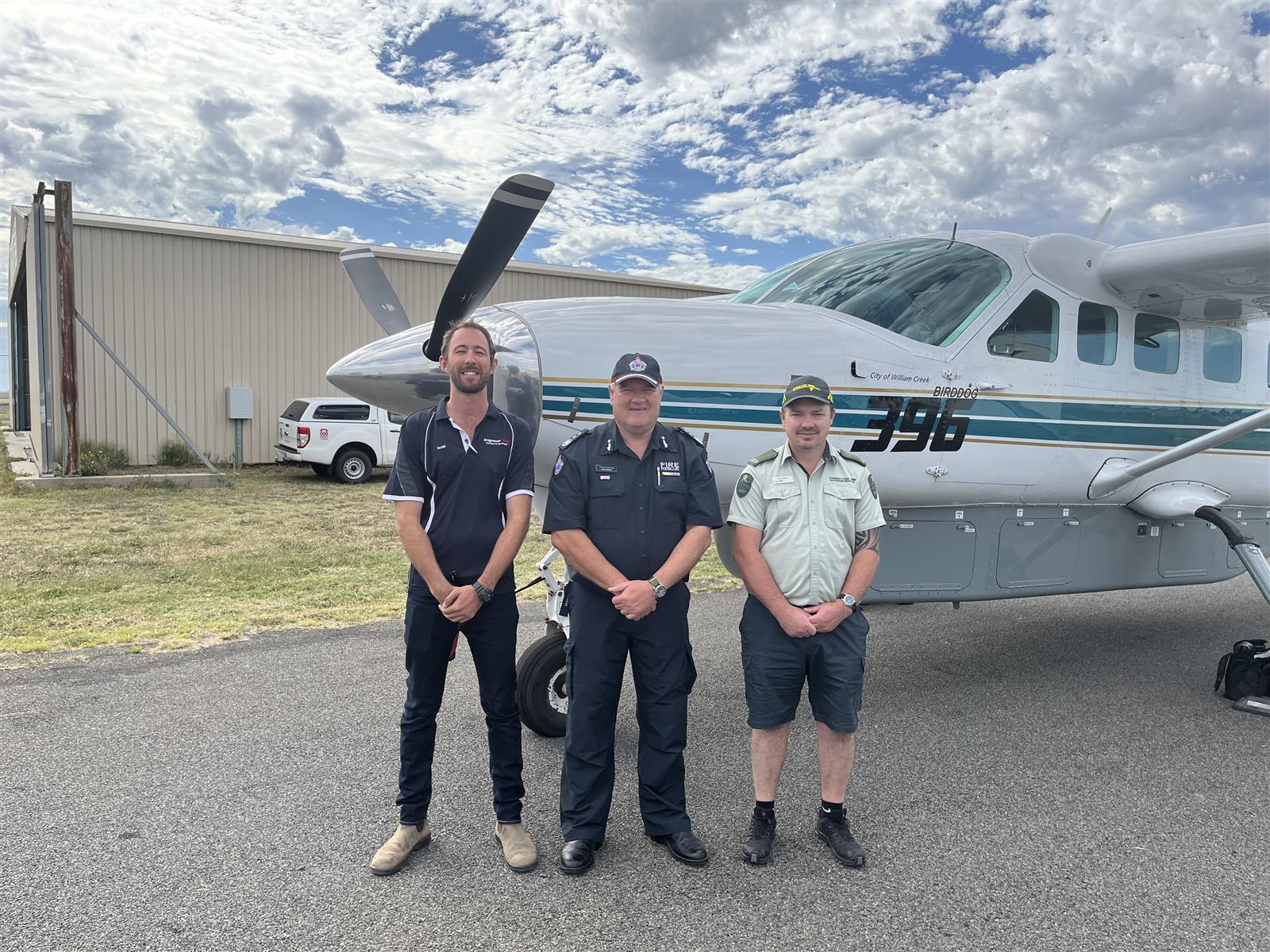 Pilot Mark, District 17 ACFO Mark Gunning and FFMV Wimmera District Manager Dom Uljanic
Pilot Mark, District 17 ACFO Mark Gunning and FFMV Wimmera District Manager Dom Uljanic
For the first time in many years, a fire observing aircraft will be situated for the next month in the Wimmera due to the elevated fire risk during this time.
Aircraft are strategically positioned across the State depending on risk, and while this area has had aircraft in place when required, Horsham aerodrome will now have a fire observing aircraft full-time, for at least the next 30 days.
Despite varying rainfall throughout the state in recent weeks, grass and crop fires remain a risk for the rest of the season – especially through the north and west of Victoria, including the Mallee, Wimmera and South-West.
CFA and Forest Fire Management Victoria (FFMVic) are continuing to work together to ensure quick responses to fires and support for on-ground operations.
Observation planes conduct flyovers to spot any fires that may have broken out and are also our eyes in the sky during an incident.
District 17 ACFO Mark Gunning said CFA and FFMVic regularly used aircraft to fly over the district for aerial observation.
“The plane has been up eight times since Christmas to look for ignition after lightning and storms,” he said.
“On several occasions we have either spotted or been able to fly to a fire to provide aerial intelligence.
“This aircraft will enable CFA and FFMVic to easily undertake observation of the district to look for any ignition, as well as provide aerial intelligence if a fire occurs.”
Wimmera District Manager Dom Uljanic said this was a great opportunity to remind everyone in the district over the coming weeks to be vigilant about fire, especially as the weather warms up.
“It will be great to see a fire observation plane in the Wimmera full-time, allowing for more opportunities for our teams to continue to develop and refine their aviation skills, knowledge and experience,” he said.
“Despite recent rains, a couple of warm days will see fuels dry out quickly and February can bring significant Fire Danger days.”